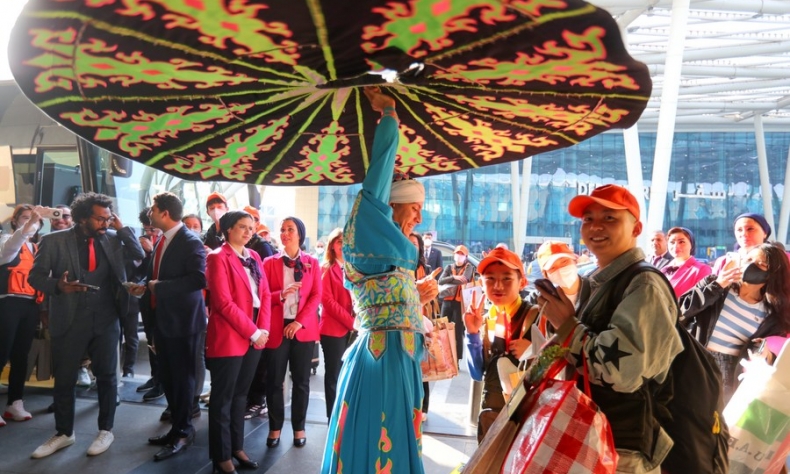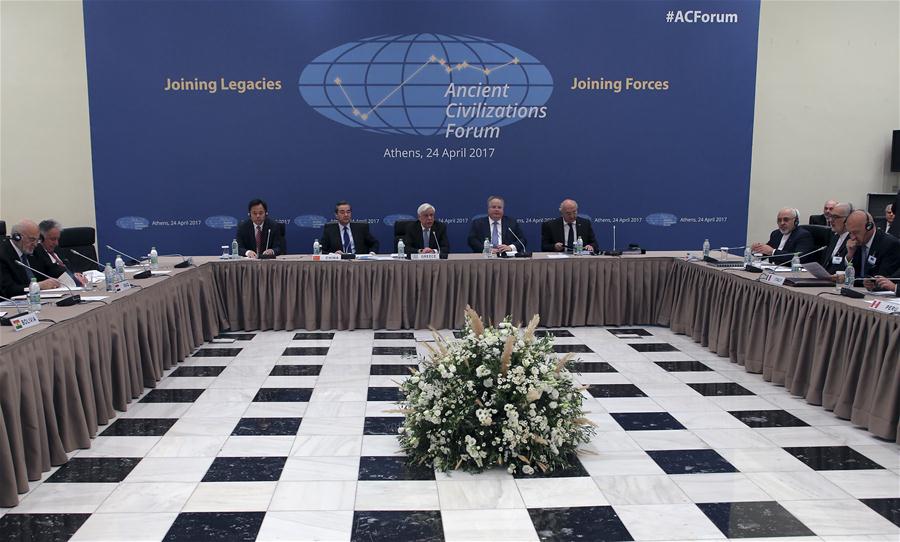Cooperation Among Civilizations

Today’s world looks rather different. The concept of creating synergies to tackle and overcome common challenges and threats is more important than ever.
China represents an ancient civilization and is striving to become a modernized country where innovation and technology echo its current and future development. The combination of the knowledge of the past and of the capacity to progress in today’s and tomorrow’s world is impacting its economic and foreign policy. The country is now eager to promote cooperation among different civilizations and facilitate dialogue.
Generally speaking, the Belt and Road Initiative, a China-proposed initiative that aims to boost connectivity along and beyond the ancient Silk Road routes launched in 2013, makes antiquity a symbol and a beacon for designing modern plans where inclusivity prevails. The ancient routes are nowadays being transformed into a massive land and sea zone where several countries interact on different themes, with organic connectivity serving as its main characteristic.
Enhanced conversations among nations of the world do align with United Nations (UN) priorities. Since 2005, the UN Alliance of Civilizations (UNAOC) has become an international platform for intercultural dialogue. In particular, the areas of education, youth, migration, media and women as peace mediators are at the epicenter of attention. As UN Secretary General António Guterres once stated, “In these troubled times, the UNAOC is a unique and inclusive platform for member states, the private sector, youth, civil society and the media to exchange views and commit to dialogue and new partnerships.”
China obviously supports the UNAOC and plays a role in drafting relevant UN General Assembly resolutions. The 2015 resolution, for example, acknowledged the diversity of the world and how all cultures and civilizations contribute to the enrichment of humankind. It recognized the importance of respect and understanding for religious and cultural diversity, and encouraged tolerance, respect, dialogue and cooperation among different cultures, civilizations and peoples. In 2017, then Foreign Minister Wang Yi focused on the importance of both UNESCO and UNAOC in helping civilizations complement each other via interaction and healthy competition.
On several occasions, China has demonstrated its interest in fostering inter-civilizational talks. In 2017, in coordination with Greece, the two countries launched the Ancient Civilizations Forum in Athens. Other participants were Bolivia, Egypt, Iraq, Iran, Italy and Peru, while Armenia joined the format at a later stage. This group of countries offered a synthesis of the Andean, the Chinese, the Greek, the Egyptian, the Mesopotamian, the Roman and the Persian civilizations.

Two years later, in 2019, the Chinese Government hosted the Conference on the Dialogue of Asian Civilizations in Beijing. Although the conference’s focus was Asia, the message it sent went global. Then Greek President Prokopios Pavlopoulos, for instance, was among the keynote speakers. In his remarkable address, he concentrated on “the substance of dialogue among civilizations,” and on the clout of both China and Greece in recognizing this value “as the basis of peaceful coexistence” in turbulent times.
This year, China went one step further and proposed the Global Civilizations Initiative (GCI) in another attempt to defend diversity and consider culture an opportunity for dialogue and deliberation. Compared to four years ago, today’s world looks rather different. Peace and stability are no longer taken for granted, whereas the exit from the COVID-19 pandemic is not necessarily accompanied by economic certainty and less inequality. The concept of creating synergies to tackle and overcome common challenges and threats is more important than ever.
China’s understanding of the world does not change, but the international environment does.
Still, a basic question remains: Is the clash of civilizations theory the best tool to address the world’s problems? The Chinese answer is a negative one, and this is how the GCI came into being.
In spite of the tense global status quo, there is still reason for optimism. This year marks China’s return to normalcy after the COVID-19 pandemic. After a three-year hiatus, more people-to-people exchanges are expected to take place, subsequently generating a better understanding of and between different civilizations.
The author is the director of the EU-China Program at the Centre International de Formation Européenne.
 Facebook
Facebook
 Twitter
Twitter
 Linkedin
Linkedin
 Google +
Google +










